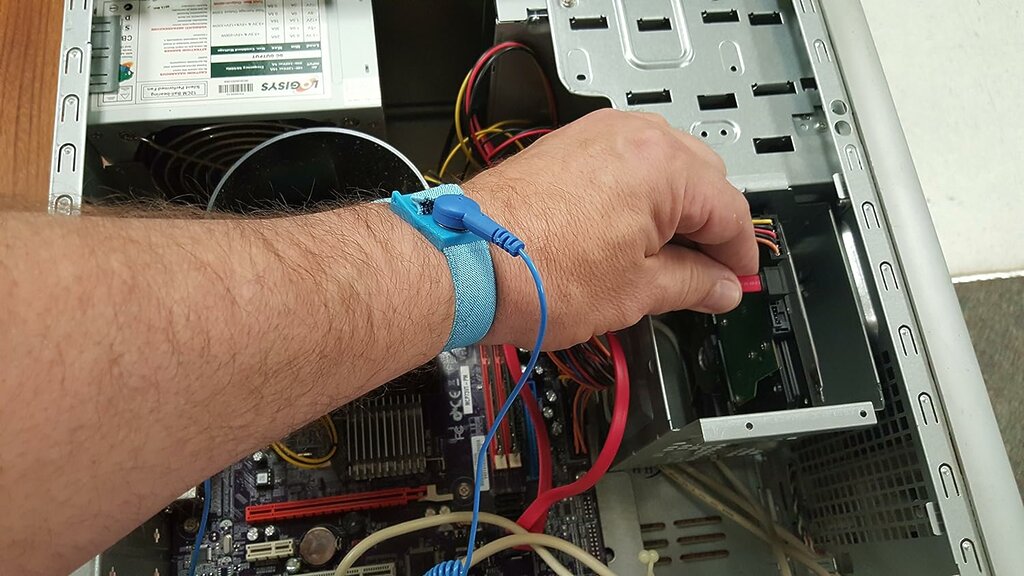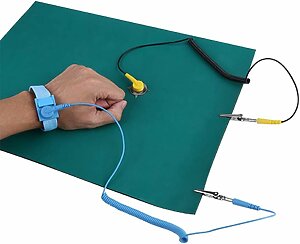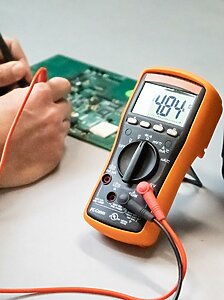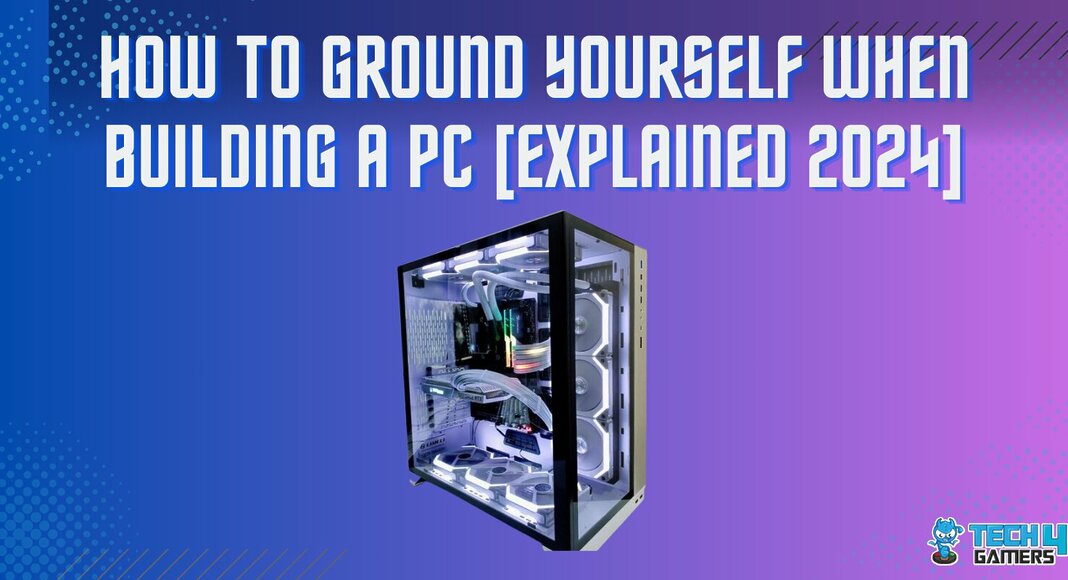Looking for how to ground yourself when building a PC? If you feel troubled that you’ll mistakenly short out a vital component, don’t panic; we have got you covered. Grounding prevents damage to the computer’s internal parts by electrostatic discharge. There are no such complications in grounding yourself. Let’s learn the methods.
- Grounding is a process of flowing electrostatic discharge to the earth instead of to your PC components. It is a safety measure for the system’s protection.
- You can avoid ESD damage and enhance system stability by grounding yourself when building. Disadvantages include extra effort and the cost of anti-static equipment.
- Touch any grounded metal object or computer case. Use an anti-static wrist strap attached to your wrist and a grounded surface or work on an anti-static mat connected to a grounded outlet.
- PCs are an investment, and grounding yourself is a small effort to safeguard that investment. It helps avoid costly repairs or replacements due to preventable damage caused by static electricity.
Touching Grounded Metal Objects
Before installing or touching internal PC components that can be damaged by electrostatic discharge, put your hand on the bare metal such as the surface of the computer’s case which is touching the ground directly. This is the easiest and quickest option, so many people only use this precaution. However, there’s a tiny but definite risk that taking only this precaution will not be enough. You can only rely on this if you’re working with components that are not expensive.
Using An Anti-Static Wristband
Items like these are easily available in online markets or at electronic stores. Additionally, wear an anti-static wristband tightly onto your skin and clip the other end onto the grounded bare metal object. If you find a wristband with a loop and not with a clip, it’s easier to slip it over the center screw on a wall outlet plate. Additionally, this method provides a convenient alternative for securing the wristband during use. Moreover, never use a wireless wristband as they don’t function properly.

Some of the best wrist straps available are:
- ARCTIC EAGLE Anti-Shock Wristband
- KingWin Anti-Static Wrist Strap
- Vastar ESD Anti-Static Wrist Strap
- Rosewill Anti Static Wrist Strap Band
Using An ESD Mat
Purchase a conductive electrostatic discharge mat. Then, place all the components on the mat and frequently touch it while you work. Some models come with a spot to clip your wristband as well. Moreover, you can work on a vinyl ESD mat as rubber is expensive.

Check Through Multimeter
If you’ve grounded yourself by certain methods, this technique effectively ensures that no electricity flows through the PC’s case, thereby actively confirming your successful grounding.
Turn on the multimeter. If it isn’t set at preset, then navigate to its VDC configurations to select the suitable voltage range so that it can read your PC’s voltage. Now, insert the red probe into the unit you want to check and the black one into a ground wire pin. You can now note the numbers on your multimeter.

Why Do You Need to Ground Yourself?
Here are a few important reasons:
- This prevents components from static electricity that can damage sensitive PC parts.
- Grounding yourself ensures that any built-up static electricity is safely discharged.
- Grounding helps maintain the optimal performance and longevity of your PC.
- It reduces the risk of intermittent failures or sudden malfunctions.
Pros & Cons Of Grounding
| Feature | Pros | Cons |
|---|---|---|
| Grounding | ✅Avoids Static Electricity Damage ✅Enhances System Stability | ❌Extra Effort Required ❌Cost of Anti-static Equipment |
| Not Grounding | ✅Convenience ✅Cost Saving | ❌Risk of Electrostatic Discharge ❌System Instability |
Final Verdict
Proper grounding is essential to prevent static electricity-related damage to delicate components when building a PC. Anti-static tools, such as wristbands or mats, can significantly reduce risks. Let’s delve into valuable insights and tips shared by the PC-building community on Twitter:
Let’s not forget to stay grounded via grounding wire & or bracelet while building a pc unless you want to fry any components.
— DJ Xage (@OfficialDJXage) December 18, 2019
Related Articles:
- How To Check PC Specs? [All Components + Methods]
- How To Remove Malware And Viruses From PC? [5 Methods]
- How To Clean Your PC Without Compressed Air?
- Your PC is At Risk Updating It Now [FIXED 2024]
- How To Clear Browser’s Cache? [PC And Phone]
Thank you! Please share your positive feedback. 🔋
How could we improve this post? Please Help us. 😔
[How To’s & Guides Editor]
Haddi has been in the Gaming and tech Space for over 10 Years Now; he has worked on notable websites like eXputer, Gamepur, Gear Siege, Gearnuke, and plenty more. He is an expert at Games & PC Hardware; you can expect him to solve any problem. People often joke, that if there is any problem anyone can solve, Haddi can solve it faster. Currently, Haddi writes and manages a Team of Experts at Tech4Gamers.
Contact: Haddi@tech4gamers.com



![How To Turn Off Xbox Controller On PC? [Answered] HOW TO TURN OFF XBOX CONTROLLER ON PC](https://tech4gamers.com/wp-content/uploads/2023/04/HOW-TO-TURN-OFF-XBOX-CONTROLLER-ON-PC-218x150.jpg)


![How To Remove AMD CPU Fan [All Steps] How to Remove AMD CPU FAN](https://tech4gamers.com/wp-content/uploads/2023/02/HOW-TO-2-2-218x150.jpg)
![How To Remove PIN From Windows 11? [ALL METHODS] HOW TO REMOVE PIN FROM WINDOWS 11](https://tech4gamers.com/wp-content/uploads/2023/09/HOW-TO-REMOVE-PIN-FROM-WINDOWS-11-218x150.jpg)